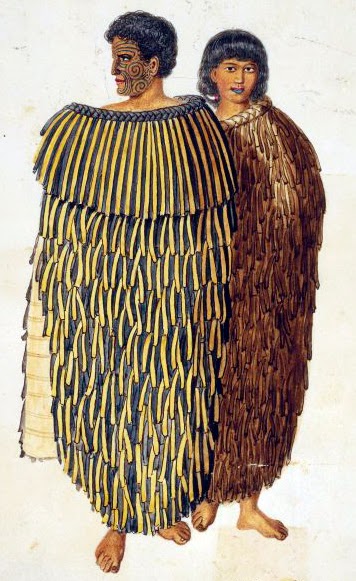 |
| Waitangi Treaty |
New Zealand became an official colony of Britain on February 6, 1840, with the signing of the Waitangi Treaty. The treaty gave the British government, headed by Queen Victoria, political sovereignty in New Zealand. In the treaty, the Maori gave sovereignty to the government of Britain but were allowed to continue their own cultural practices and traditions.
Though many provisions were made for the protection of the Maori, especially in regard to land boundaries and ownership, throughout the 19th century the Maori seceded many of their rights and homelands to the colonial New Zealand government, mostly during the Maori wars.
In 1939 the British Colonial Office gave Captain William Hobson the authority to officially annex the islands now known as New Zealand as a part of the British Empire. Britain wanted to annex New Zealand through the singing of the Waitangi Treaty for a few reasons. Europeans had been in New Zealand since that late 18th century, but emigration and trade from British subjects in the islands increased substantially during the 1830s.
In the 1830s British politics and culture were under a heavy moral influence to protect native cultures affected by British imperialism, such as the Maori. This moral sentiment in Parliament and in the popular newspapers helped to prompt the Colonial Office to try to annex the colony in order to help protect the Maori from British exploitation.
The missionary Henry Williams copied the Waitangi Treaty, which was eventually signed by 529 chiefs on eight different copies in Maori and in English. There were differences, however, between the English and the Maori text that later created problems between the settlers and the Maori after the signing of the treaty.
 |
| Maori people |
The treaty was broken down into a preamble and three parts. The controversy focused predominantly on the preamble and the second article. The English preamble suggested that the main focus of the Waitangi Treaty was to establish a British government to create a British colony. This differed from the Maori version that stated that the Queen Victoria wanted the treaty to protect and allow the Maori to retain land indefinitely.
In the second article, the Maori “individuals” as well as “the Chiefs and Tribes of New Zealand” were allowed possession of land. But the Maori version stated that the “unqualified exercise of ... chieftainship” governed land claims. This later helped the colonial government in New Zealand force individual land ownership upon the Maori, which allowed the British settlers to purchase land that was formerly held in common.
Many Anglo–New Zealanders consider the Waitangi Treaty as the origin of the modern nation-state of New Zealand. There has been continued debate about the original intention as well as the effects of the treaty upon the Maori. In the 20th century, there has been a conscious attempt to redress the wrongs of the 19th century. The Waitangi Act, signed on October 10, 1975, established the Waitangi Tribunal, which eventually paid reparations to the Maori.